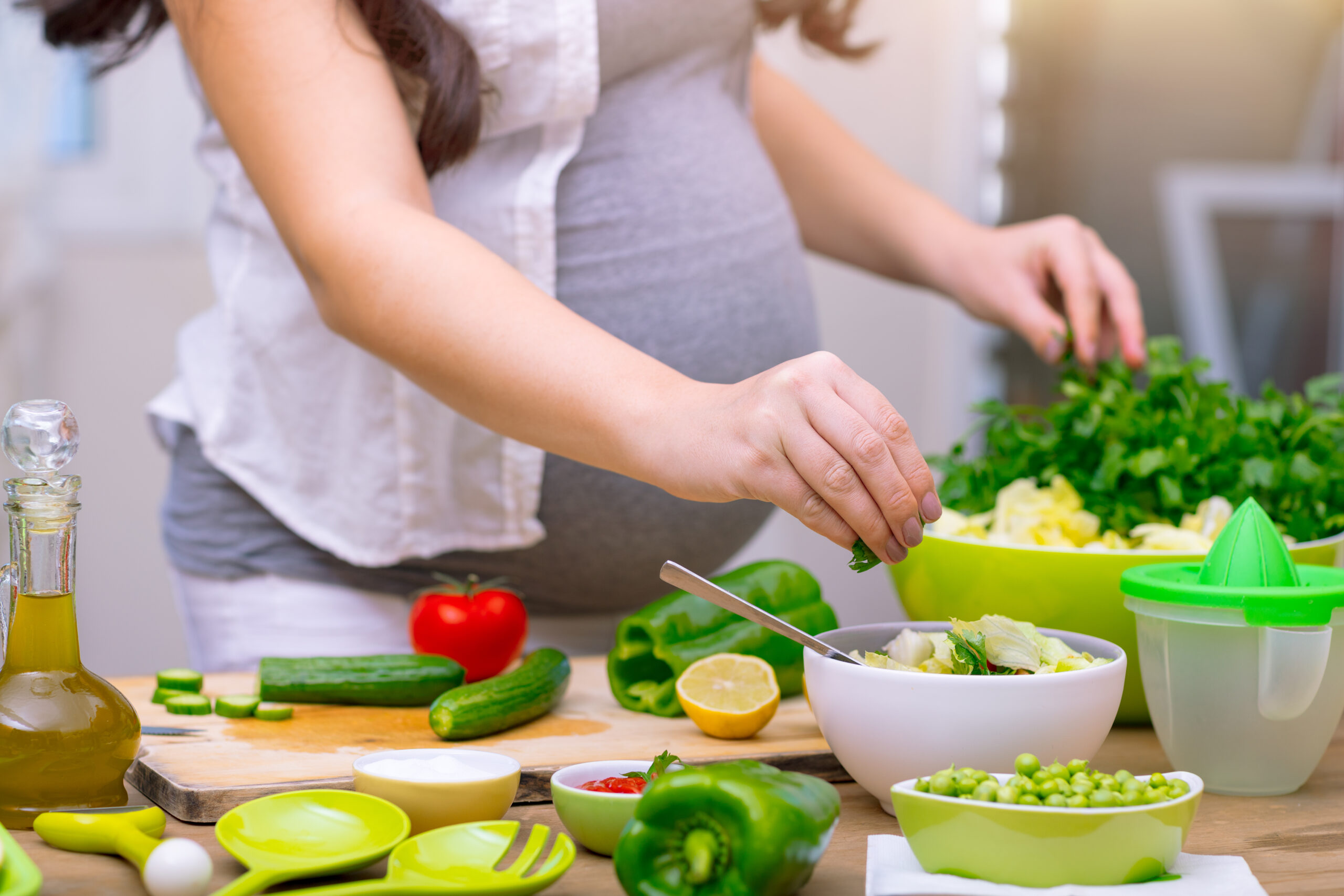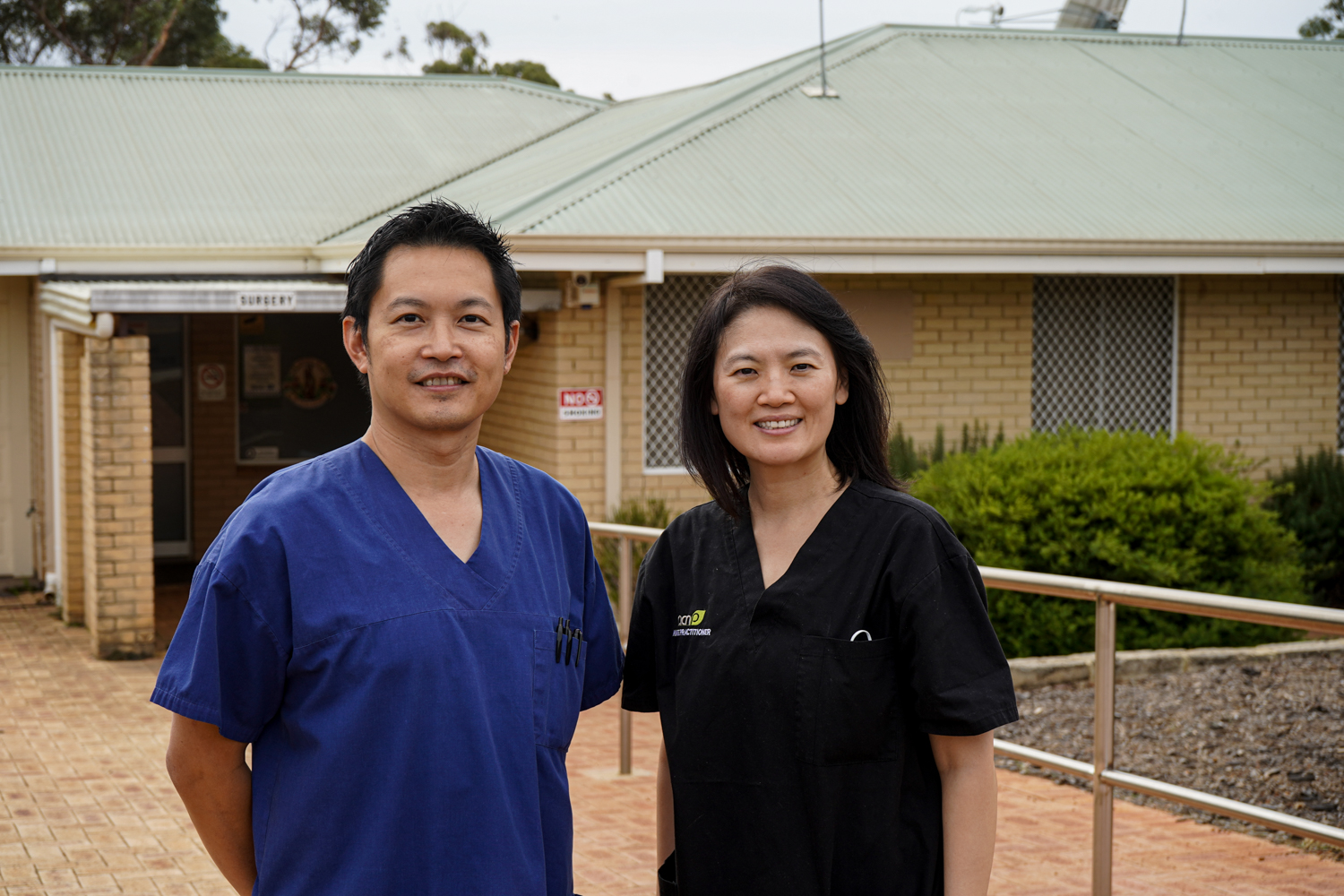Pregnancy is an exciting time, but being diagnosed with Gestational Diabetes Mellitus (GDM) can throw a spanner in your pregnancy plans. If this happens to you, our dietitian CHARLOTTE ROWLEY has some ideas.
Gestational diabetes is a type of diabetes that occurs during pregnancy and resolves after giving birth. The levels of sugar (glucose) in the blood are higher than they should be, and so one of the most common concerns we get asked on the helpline is “What can I eat?”
Eating when you have gestational diabetes
As with all diabetes, the foods that will increase your blood glucose (sugar) levels are sugary, sweet foods and starchy foods. We call these foods carbohydrates.
When they are digested, they are broken down into simple sugars, called glucose, and this is what enters your bloodstream and is what is checked when you prick your finger.
Knowing this, many women assume that they need to completely cut out carbohydrates for the duration of their pregnancy. But this isn’t necessarily true. In fact, there’s limited research on women who restrict carbohydrates during their pregnancy, and the outcomes of this for the baby.
With that in mind, here at Diabetes WA we generally recommend that women continue to include carbohydrates and, with the support of their care team, work out the amount that is suitable for them and their growing baby.
Generally, we recommend eating 30-60 grams of carbs with meals and 15-30 grams of carbs with snacks. To give you an idea, 1 slice of bread, half a cup of cooked pasta, a third of a cup of cooked rice, most fruits and a glass of milk all contain 15g of carbohydrates. Combining different foods can make up the 30-60g of carbs in a meal.
Not all carbs are created equal
White bread and multigrain bread are both carbohydrates, but multigrain bread is more slowly digested, meaning that the glucose will be absorbed more slowly into the blood. This results in more stable blood glucose levels, which are better for you and your baby.
We call this difference the Glycaemic Index (GI). Carbohydrates that are quickly digested and absorbed into the blood are categorised as high GI, and these are the carbs we want to limit.
Foods that are more slowly digested and absorbed are categorised as low GI, and these are the foods we want to include regularly. Remember that this only applies to carbohydrate foods.
Foods that do not contain carbohydrates, such as meat and most vegetables, do not have a GI rating, as they do not have a significant impact on the blood glucose level. You can find more information about GI here.
What else should I be eating?
We want to include plenty of plant foods. Of course, you need to be cautious about how much fruit you eat, but it does make a great snack.
Having plenty of low-carbohydrate veggies is important as they provide nutrients to help baby grow and keep you both healthy. They also help to slow down digestion (even further) and help with bowel regularity, which can be a big issue in pregnancy! So, aim for about half a plate of low-carb veggies with every meal (about two handfuls of veggies.)
Low-carbohydrate vegetables include: tomatoes, cucumber, capsicum, mushrooms, broccoli, cauliflower, zucchini, celery, green beans, avocado, eggplant, lettuce, carrots, onions, beetroot, kale, asparagus, cabbage, bok choy, spinach, rocket, artichoke and leek. Mixed frozen vegetables are super convenient if you’re short of time.
We also want to continue eating meat or other protein sources. This is important as protein provides the nutritional building blocks for growing a baby. As with all pregnant women, we have to be careful about some seafood and soft eggs, but otherwise protein should be included with every meal – protein making up approximately a quarter of your plate is a good place to start. Try to buy low-fat cuts or cut the fat off before you cook it.
If you eat plant-based proteins, such as lentils and legumes, it’s important to remember that as well as being a protein source, they are also a source of carbohydrates, so need to be added to your carbohydrate intake.
Lastly, we want to include some dairy foods. Many dairy foods are also sources of carbohydrates, including most milks and yoghurt. When we are pregnant, we need more dairy, so having a glass of milk with breakfast, or yoghurt as a snack, are great options, and well within your carbohydrate recommendations.
Read more about the overall recommendations for eating when pregnant.
How Diabetes WA supports women with gestational diabetes
If you are seeking more support with your gestational diabetes, a diabetes educator can help you understand your individual requirements and support you with managing your blood glucose levels through your pregnancy.
Diabetes WA offers face-to-face appointments with dietitians and diabetes educators in our Subiaco, Maddington and Port Kennedy clinics for women with gestational diabetes.
Diabetes WA Telehealth for country WA is a free education and clinical support service, available to women with gestational diabetes in rural and remote areas of Western Australia. Virtual appointments are provided by credentialled diabetes educators.
The Diabetes WA Helpline is a free service is for West Australians living with any type of diabetes or pre-diabetes, including gestational diabetes.
If you have any questions about gestational diabetes, call 1300 001 880, Monday to Friday (8:30am to 4:30pm) and speak to a caring, experienced diabetes health professional.
You can also send your query by email info@diabeteswa.com.au if you prefer to write to us.
Baby Steps is a free online program that supports women who have had gestational diabetes during pregnancy to make healthy choices. It is designed to empower women to implement lifestyle changes and reduce the risk of type 2 diabetes. You will find short videos, learning sessions, interactive activities and a place to chat to other mums.




